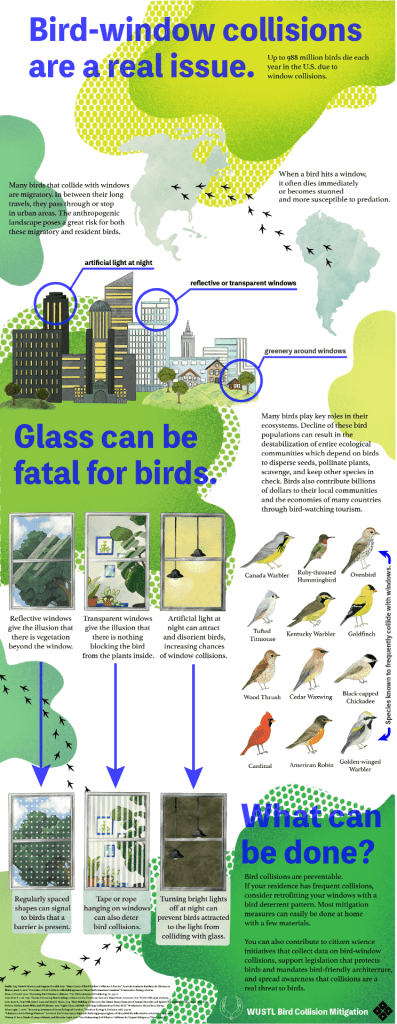
Up to 1 billion birds die every year from window strikes in the U.S. because birds cannot see glass. Unlike humans that primarily learn to see glass by relying on visual cues like mullions or windowsills, birds cannot use these cues to learn that glass is blocking their flight path. Many migratory birds’ eyes are also located on the sides of their heads. This allows them to scan their surroundings for potential threats, but it also means significantly decreased depth perception compared to humans, and reduced vision for objects ahead of them. Combining bird vision with high flight speeds and small body sizes, windows become an extremely dangerous obstacle for birds in flight.
Bird strikes are significantly prevalent in St. Louis. The city lies right in the middle of the Mississippi Flyway, a path that many birds take during the migration seasons to travel from Canada to the Gulf of Mexico in the fall and back the other way in the spring. This migration pattern means that every year in St. Louis, there is a sharp increase of bird collisions with windows during the September/October or April/May months. Combined with the city’s extensive urban development, the St. Louis region of the flyway becomes a hotspot for bird collisions with human-made structures.
The Bird Strikes Team is partnering with the St. Louis Zoo to collect and analyze bird strike data around the WUSTL campus during these fall and spring months. The ultimate goals are to determine whether bird strikes are occurring on campus and if so, what mitigation techniques we can implement to decrease collisions. The team hopes to have the university become a leader in the St. Louis community for bird-friendly buildings and to increase awareness of the issues our feathered friends face.